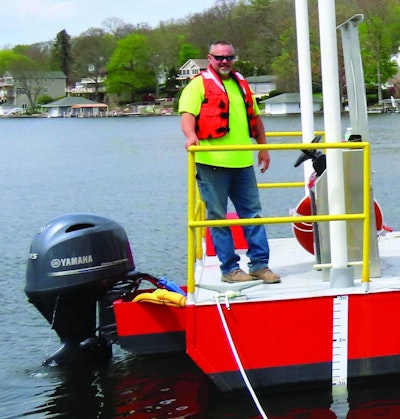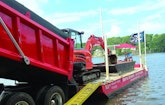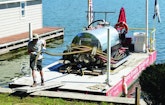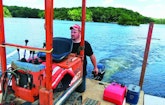
Bill Post at the helm of the 30-by-12-by-3-foot commercial transport barge while George Rosselli enjoys the cruise.
Accepting a home inspector’s challenge in 2000 to replace a failed septic system on an island in Highland Lakes unleashed unlimited business potential for Joe Mayers, owner of Septic Experts in Wantage, New Jersey.
When Onsite Installer wrote about Mayers in 2004, his custom...










